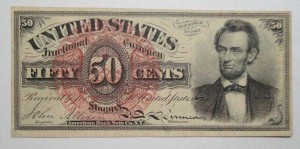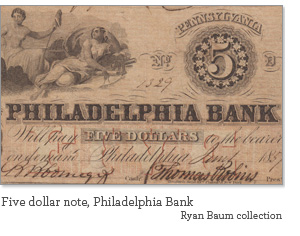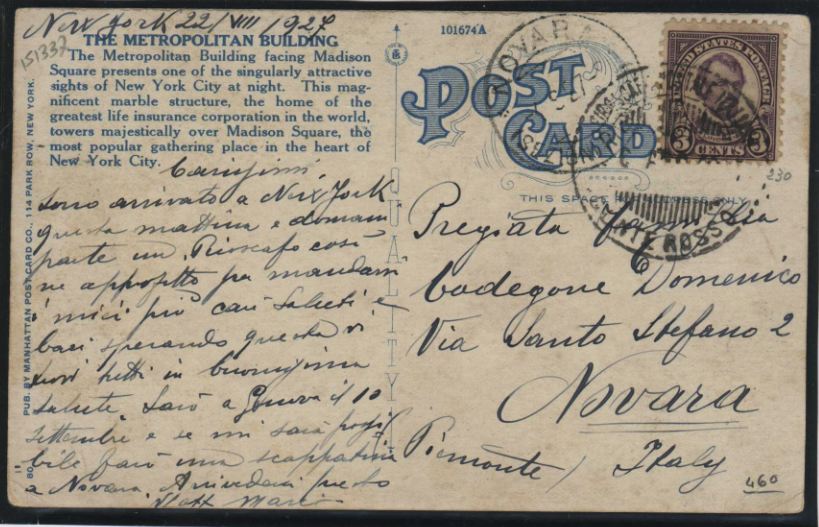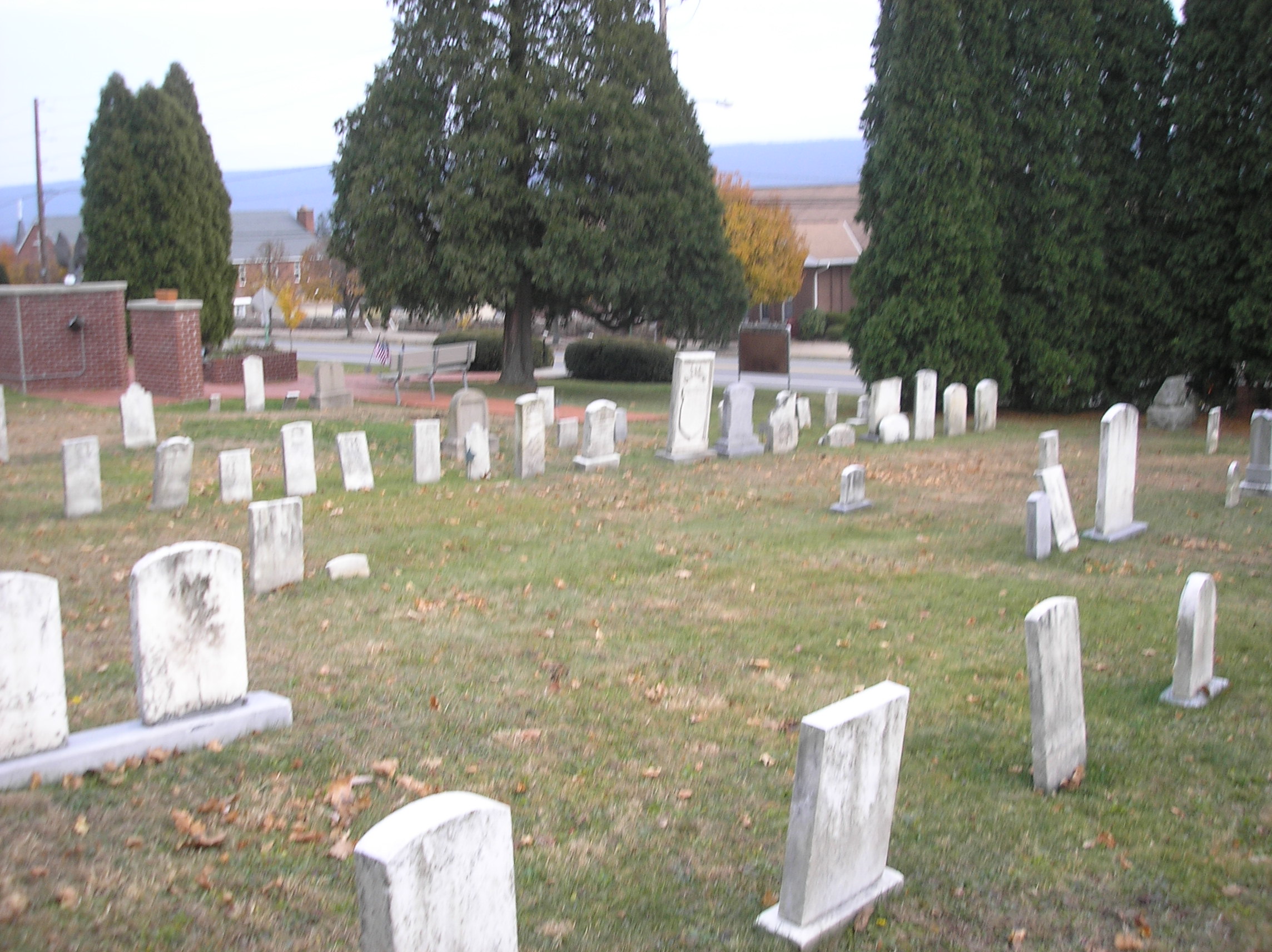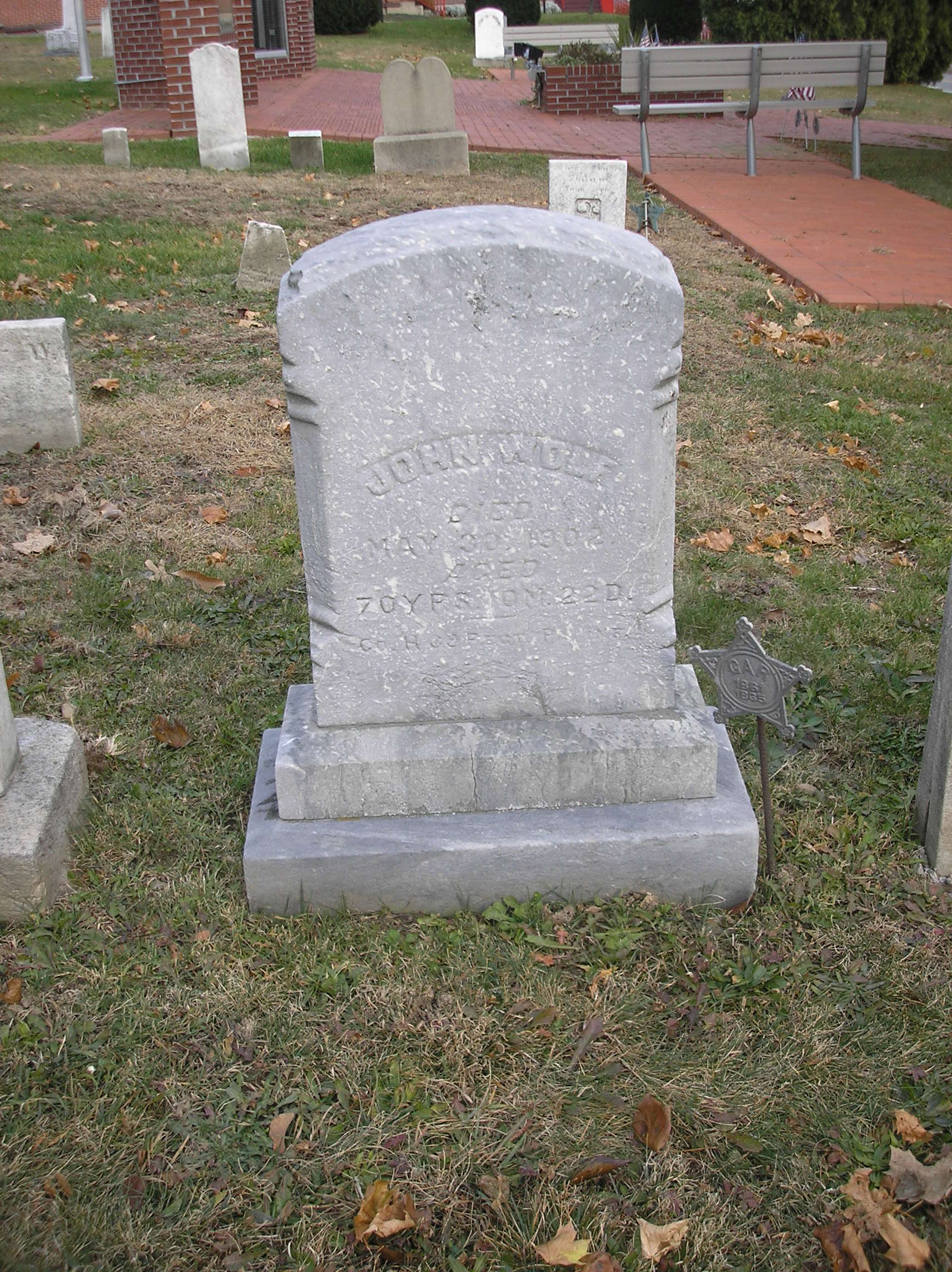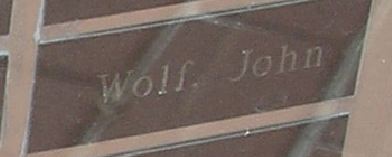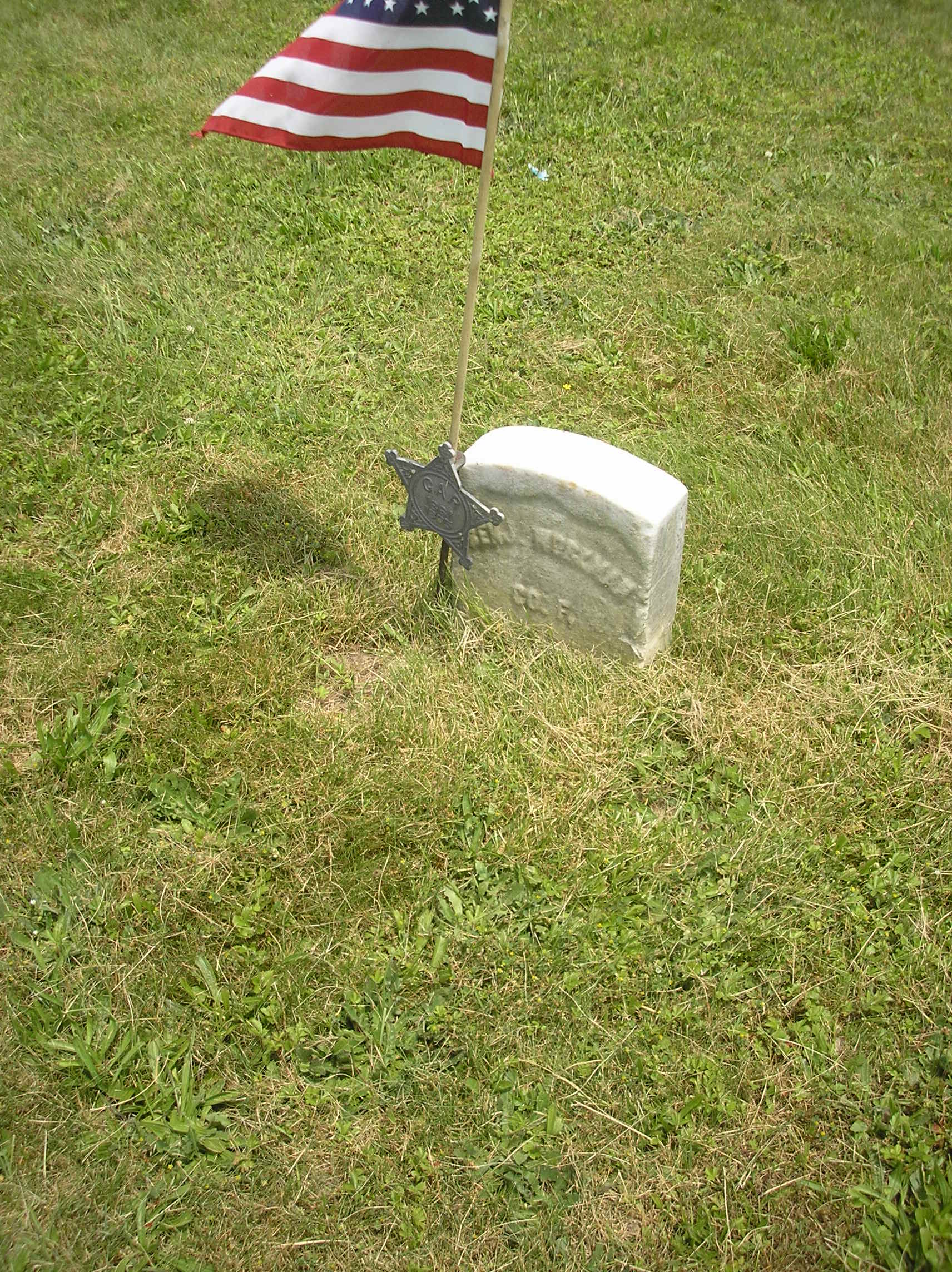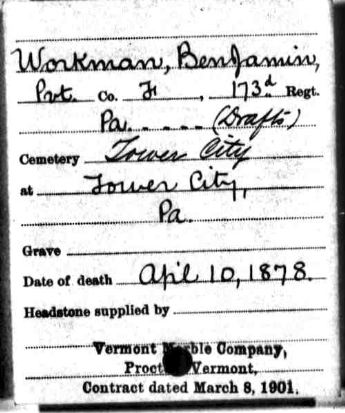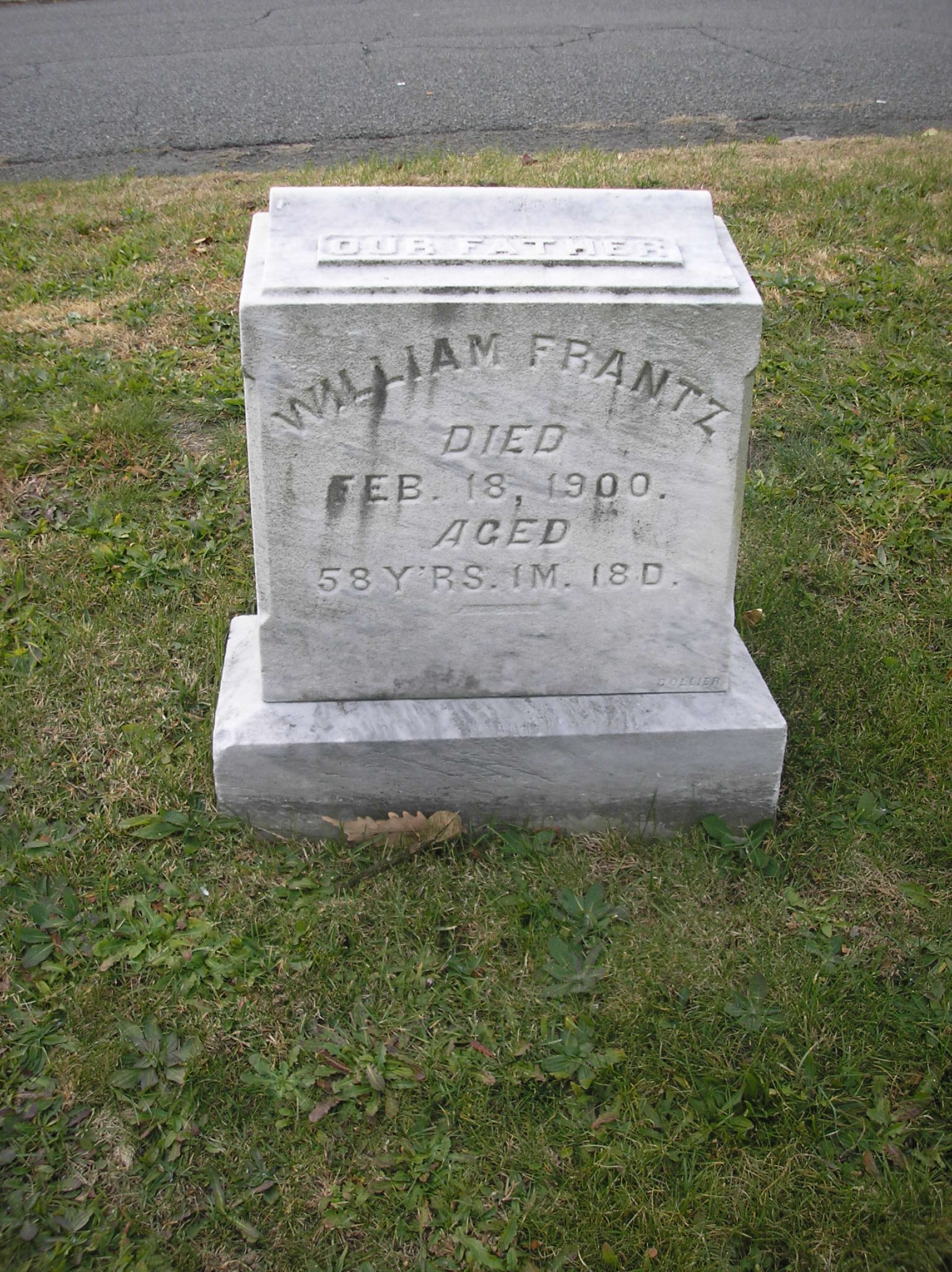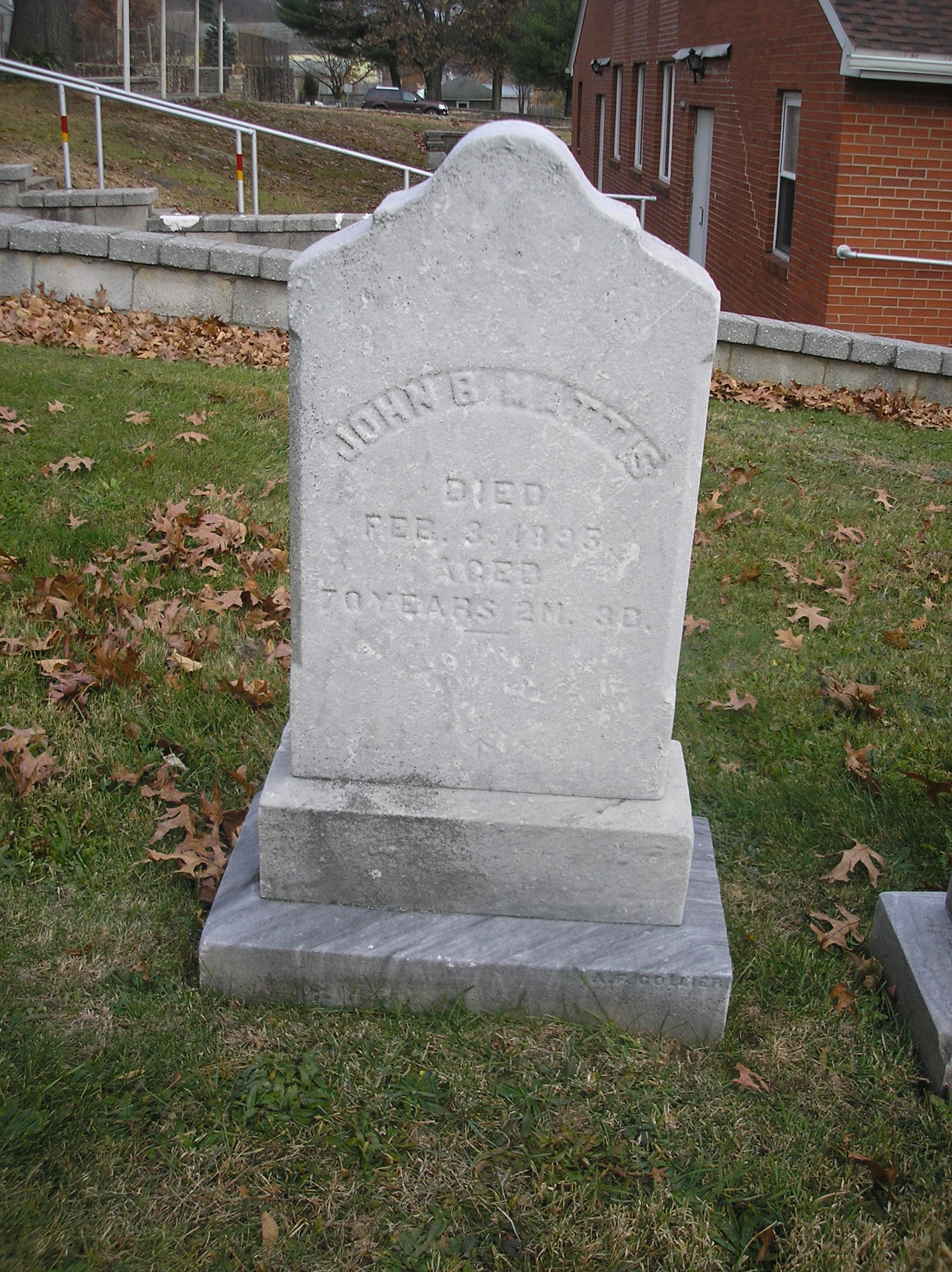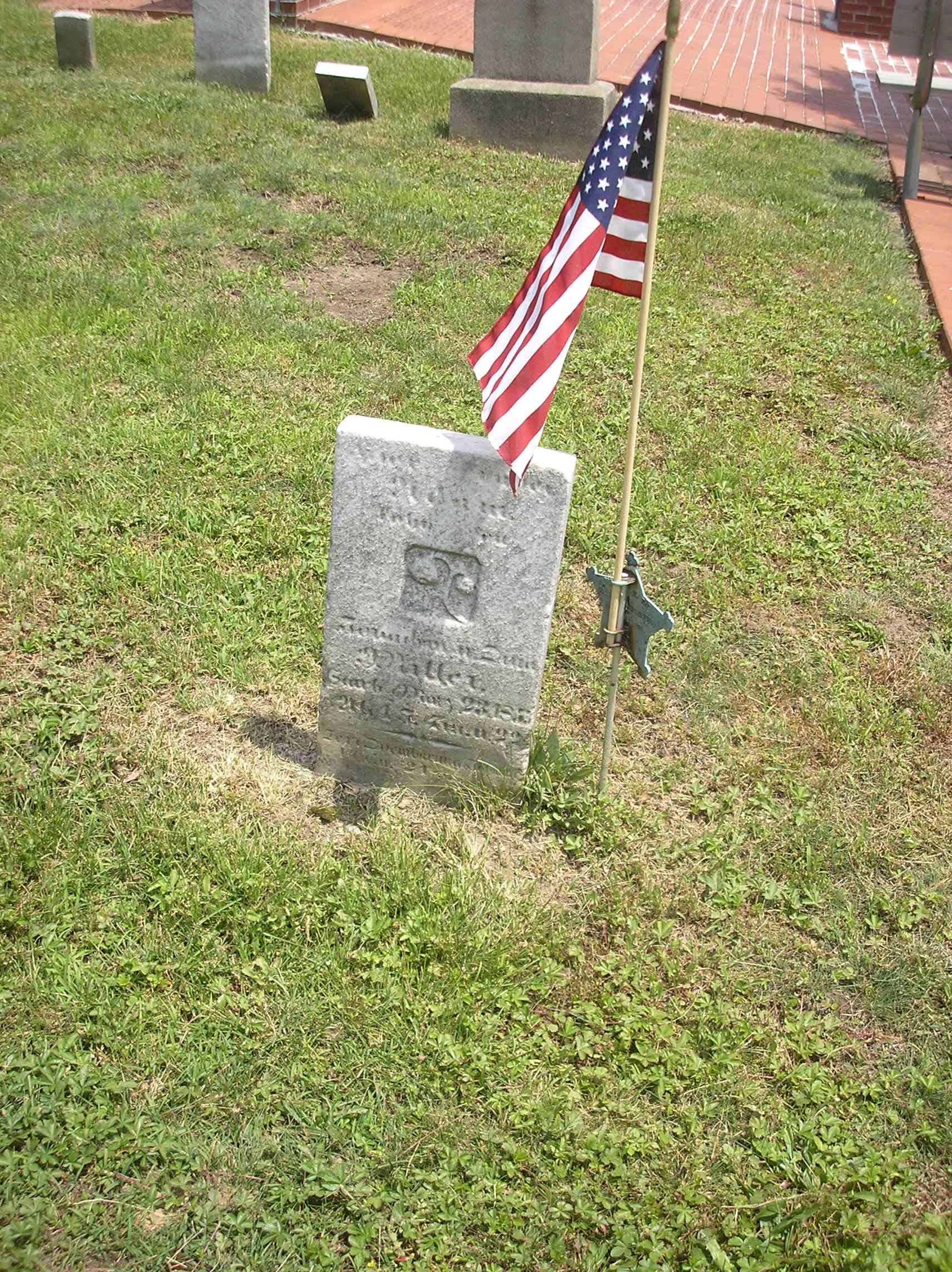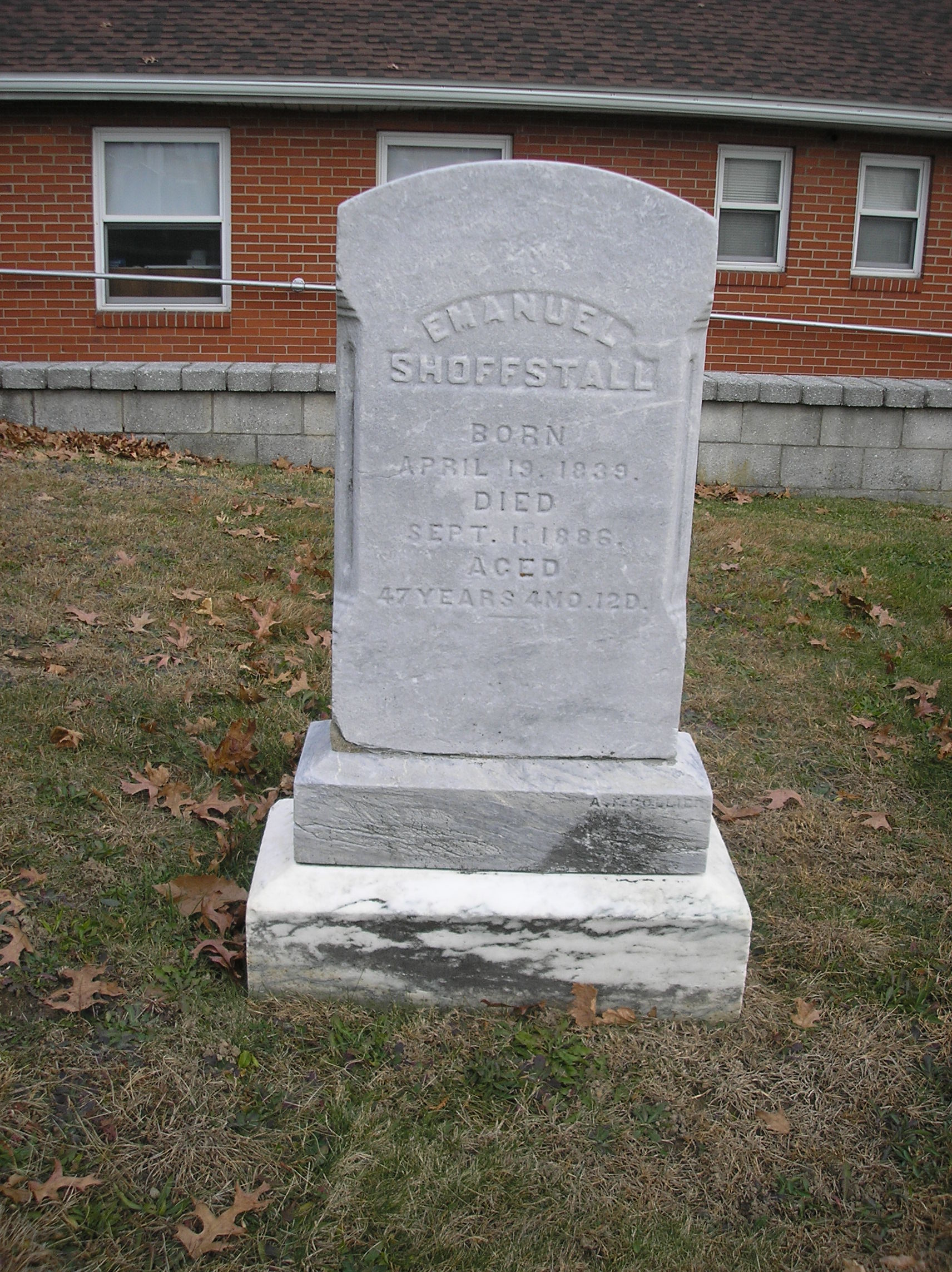Posted By Norman Gasbarro on February 17, 2013
Dr. Henry O. Witman, a physician who spent time working with his father, a medical doctor in Halifax, Dauphin County, Pennsylvania, saw service during the Civil War in two militia regiments that were called up by Governor Andrew Curtin to meet state emergencies, first in September 1862, and second in July 1863. This “citizen soldier” received his early education at a school that was established in Harrisburg specifically for the purpose of training “citizen soldiers.” After the Civil War, Dr. Witman became prominent in Harrisburg and later was called to Washington, D.C., to be Medical Examiner for the Pension Bureau.
A brief announcement of his death was given in the Harrisburg Patriot of 15 February 1892:

The following sketch appeared in the Commemorative Biographical Encyclopedia of Dauphin County, page 358:
Henry Orth Witman, M.D.,was born 22 January 1830, in Harrisburg, Pennsylvania. He was the oldest son of John Otto Witman and his wife Caroline [Orth] Witman. His father was a native of Reading, and came to Harrisburg as a clerk, under Surveyor General Hiester, subsequently studying medicine under Dr. Luther Reily, whose wife’s sister he married. And he was for upwards of forty years a successful practitioner, thirty years of which were in Halifax, Dauphin County. The son Henry Orth Witman was educated in Harrisburg at Partridge’s Military Academy, studying medicine with his father and attending medical lectures at Castleton, Vermont, graduating afterwards from the Jefferson Medical College, of Philadelphia. Until the war for the Union he practiced his profession at Halifax, in connection with his father. During the Rebellion he served as lieutenant of Company E, Sixth regiment, Pennsylvania volunteer militia [6th Pennsylvania Infantry, Emergency of 1862], and captain of company E, Thirty-sixth volunteer militia [36th Pennsylvania Infantry, Emergency of 1863]. In 1866 he removed to Harrisburg, where he continued in the active practice of his profession, until his appointment in 1890 as medical examiner in the pension office at Washington. He died in the city on the 13th of February, 1892. Dr. Witman was a learned and conscientious physician, was perfectly reliable—could always be depended upon in any emergency. His natural modesty and reserve operated somewhat against him as a physican, but it can be said of him that he was perfectly free from charlatanism in whatever form it may appear. He married, October 11, 1866, Frederica Krause, daughter of Judge David Krause, of Norristown, Pa. They had four children.

The military academy that Henry O. Orth attended in Harrisburg was one of six founded by Alden Partridge and the one at Harrisburg operated, according to information on Wikipedia, from 1845-1848. Alden Partridge was a graduate of the United States Military Academy at West Point, 1806, and was the son of Revolutionary War soldier, Samuel Partridge Jr., who at fought at Saratoga Alden Partridge began teaching at West Point after his graduation and by 1814, was appointed Superintendent. But his methods and practice resulted in his forced removal in 1818 and replacement with Sylvanus Thayer. Using ideas then very controversial, such as the “citizen soldier” concept, which was at odds with the creation of a national military class with a centralized school such as West Point, Alden Partridge, set about to promote the establishment of state-based schools that would return to the “militiaman” concept that had won the American Revolution, rather than a centralized army with a professional, military-elite officer class. The curriculum at these schools included liberal arts subjects such as language and agriculture in addition to the traditional military instruction, and specifically focused on the idea of lifelong-physical fitness training. The first school Partridge established was in Northfield, Vermont and was called the “American Literary, Scientific and Military Academy” (later to become Norwich University). Of the six regional schools established by Alden Partridge, three were in Pennsylvania: the one at Harrisburg which was attended by Henry O. Orth was called the Pennsylvania Military Institute; there was one at Reading, Berks County, called the Scientific and Military Collegiate Institute; and the one at Bristol, Bucks County, was called the Pennsylvania Literary, Scientific and Military Academy. Partridge died in 1854 and Sylvanus Thayer, who replaced him at West Point, only remained as Superintendent until 1833, when he resigned. The Army Corps of Engineers, which had its base at West Point, was later led by Thayer, and for the most of the first half of the 19th century, West Point was the country’s only school of engineering. The two concepts of preparation for war were thus embodied in the ideas of Alden Partridge (the “citizen soldier,” ready and able to take up arms through a well-trained, local or state militia) and Sylvanus Thayer (a military-elite class, of scientifically trained officers who could lead a professional army). These conflicting ideas were successfully blended together in the Civil War.
Henry O. Orth was one of those citizen-soldiers. His training at Partidge’s Harrisburg school, helped prepare him for a career as a physician as well as the possibility that he would have to take up arms to defend his home and state. As already stated in the biographical sketch, Henry was practicing medicine with his father in Halifax when the war broke out. His first service was as a 1st Lieutenant in the local militia company that was called into service in the Emergency of 1862. This brief service was from 13 September 1862 to 27 September 1862 and is noted on the Pennsylvania Veterans’ Index Card (below) from the Pennsylvania Archives.
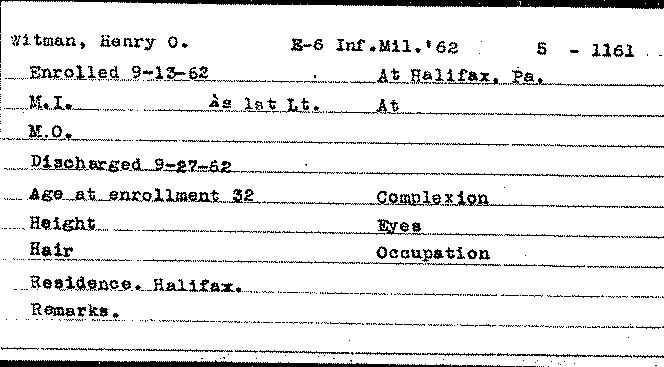
The militia unit for this service was given the designation of 6th Pennsylvania Infantry, Company E. The Bates reference of “5-1161” refers to the listing of men in Company E, in which Henry O. Witman is named as 1st Lieutenant. The story of the Militia of 1862, which includes all the regiments called into service, is found on pages 5-1147 and 5-1148 of Bates:
The rebel army had no sooner achieved its triumph in the Second Battle of Bull Run, than it hastened northward, and commenced crossing the Potomac. The southern border of Pennsylvania lay in close proximity, all unprotected, and by its rich harvests invited invasion. The Reserve Corps which was originally organized for the State defense, had been called away to the succor of the hard pressed army of McClellan upon the Peninsula, and was now upon the weary march, with ranks sadly thinned in the hard fought battled of Mechanicsville, Gaines’ Mill, Charles City Cross Roads, and the Second Bull Run, to again meet the foe, but powerless to avert the threatened danger. The result of the struggle on the plains of Manassas, was no sooner known, than the helpless condition of the State, which had been apparent from the first, became a subject of alarm. On 4 September, Governor Curtin issued a proclamation, calling on the people to arm, and prepare for defense. He recommended the immediate formation of companies and regiments throughout the Commonwealth, and, for the purpose of drill and instruction, that after 3 p.m. of each day, all business houses be closed. On the 10 September, the danger having become imminent, the enemy being already in Maryland, he issued a general order, calling on all able bodied men to enroll immediately for the defense of the State, and to hold themselves in readiness to march upon a hour’s notice; to select officers, to provide themselves with such arms as could be obtained, with sixty rounds of ammunition to the man, tendering arms to such as had none, and promising that they should be held for service, for such time only as the pressing exigency for State defense should continue. On the following day, acting under the authority of the President of the United States, the Governor called for fifty thousand men, directing them to report by telegraph for orders to move, and adding that further calls would be made as the exigencies should require. The people everywhere flew to arms, and moved promptly to the State Capital. One regiment and eight companies were sent forward during the night of the 12 September, and others followed as fast as they could be organized. On 14 September, the head of the Army of the Potomac met the enemy at South Mountain, and hurled him back through its passes, and on the evening of the 16 September and day of the 17 September, a fierce battle was fought at Antietam. In the meantime, the militia had rapidly concentrated at Hagerstown and Chambersburg, and General John F. Reynolds, who was at the time commanding a corps in the Army of the Potomac, had assumed command. Fifteen thousand men were pushed forward to Hagerstown and Boonsboro, and a portion of them stood in line of battle in close proximity to the field, in readiness to advance, where the fierce fighting was in progress. Ten thousand more were posted in the vicinity of Greencastle and Chambersburg, and “about twenty-five thousand” says Governor Curtin, in his annual message, “were at Harrisburg, on their way to Harrisburg, or in readiness and waiting for transportation to proceed thither.” The Twenty-Fifth Regiment [25th Pennsylvania Infantry, Emergency of 1862], under command of Colonel Dechert, at the request of General Halleck, was sent to the State of Delaware, to guard the DuPont Powder Mills, whence the National armies were principally supplied. But the enemy was defeated at Antietam, and retreated in confusion across the Potomac. The emergency having passed, the militia regiments were ordered to return to Harrisburg, and in accordance with the conditions on which they had been called into service, they were on the 24 September, mustered out and disbanded….
In a letter addressed to Governor Curtin, by General McClellan, thanking him for his energetic action in calling out the militia, and placing them in the field, the General adds: “Fortunately, circumstances rendered it impossible for the enemy to set foot upon the soil of Pennsylvania, but the moral support rendered to my army by your action, was none the less mighty. In the name of my army, and for myself, I again tender to you our acknowledgments for your patriotic course. The manner in which the people of Pennsylvania responded to your call, and hastened to the defense of their frontier, no doubt exercised a great influence upon the enemy.” In an order issued by Governor Bradford, of Maryland, soon after the battle, he says: “To Governor Curtin of Pennsylvania, and the militia of his State, who rallied with such alacrity at the first symptoms of an invasion, our warmest thanks are also due. The readiness with which they crossed the border, and took their stand beside the Maryland Brigade, shows that the border is, in all respects, but an ideal line, and that in such a cause as now unites us, Pennsylvania and Maryland are but one.”
Dr. Henry O. Witman, along with his fellow “citizen soldiers” returned to their occupations in their local communities. But in early 1863, it was becoming apparent that many more men were needed to fight the rebels and a national draft was instituted. Able-bodied men were required to register and Henry O. Witman again came forward to meet his civic duty. A portion of the June 1863 register sheet (shown below), for Halifax Township, shows the record of his registration as a 33-year old, single white male, born in Pennsylvania, who was employed as a doctor:
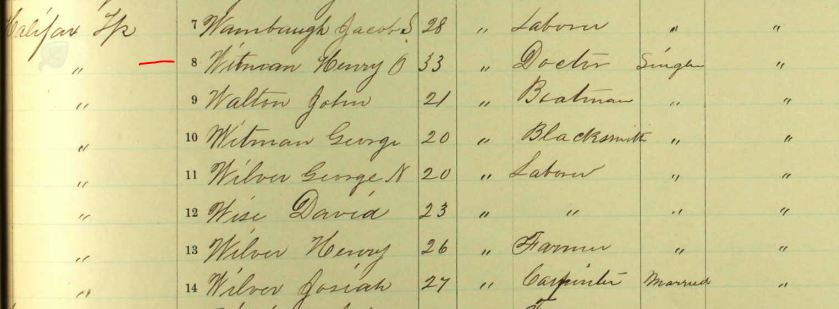
Click on document to enlarge.
While he was not drafted into the national service, the second Pennsylvania emergency appeared within days of his draft registration and once again, Henry O. Witman joined the militia company that was organized on 4 July 1864 at Harrisburg as its Captain. The Bates reference of “5-1257” is given on the Pennsylvania Veterans’ Index Card available from the Pennsyvlania Archives (below):
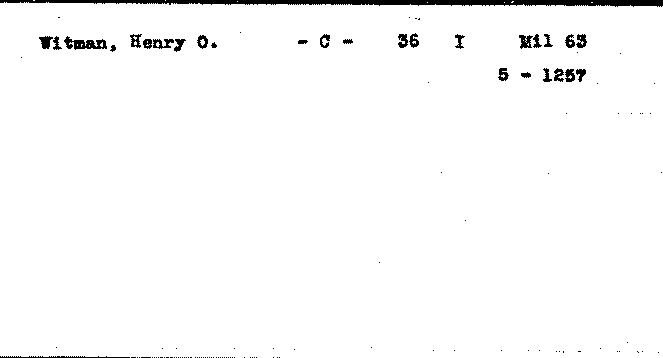
The militia company that was commanded by Capt. Witman was designated as the 36th Pennsylvania Infantry (Emergency of 1863), Company C, the story of which has been told many times here on this blog. It was also known as the “Home Guard” and the core of the company was from Gratz and the area surrounding Gratz, including Lykens Township. It has already been documented here that African Americans were included in this regiment, notably members of the Crabb family, blacksmiths of Gratz. The history of the Emergency Militia Regiments of 1863 begins on page 5-1222 of Bates. A small section of the history, as pertains to the the 36th Pennsylvania Infantry, is repeated below – namely the duties performed by the regiment following the Battle of Gettysburg:
…The rebel army made good its escape and the campaign was at an end.
The militia was, however, held for some time after this, and was employed on various duty. The Thirty-sixth Regiment was sent to Gettysburg, and its commanding officer, Colonel H. C. Alleman, was made Military Governor of the district, embracing the battle-ground. It was engaged in gathering in the wounded and stragglers from both armies, in collecting the debris of the field and in sending away the wounded as fast as their condition would permit. Colonel Alleman, in his official report, gives the following schedule of property as having been collected from the battle-field: “Twenty-six thousand six hundred and sixty-four muskets, none thousand two hundred and fifty bayonets, one thousand five hundred cartridge boxes, two hundred and four sabres, fourteen thousand rounds of small-arm ammunition, twenty-six artillery wheels, seven hundred and two blankets, forty wagon loads of clothing, sixty saddles, sixty bridles, five wagons, five hundred and ten horses and mules, and six wagon loads of knapsacks and haversacks.” The ordinance stores he shipped to the Washington Arsenal, and the remainder of the government property he turned over to an agent of the War Department. From the vatious camps and hospitals on the battle-field, and in the surrounding country, he reports having collected and sent away to northern cities, “twelve thousand and sixty-one wounded Union soldiers, six thousand one hundred and ninety-seven wounded rebels, three thousand and six rebel prisoners and one thousand six hundred and thirty-seven stragglers….”
The 36th Pennsylvania Infantry Militia, had not been mustered into service until 4 July 1863, one day after the battle ended, so when it arrived at the battlefield it was faced with the daunting task of cleaning it up and organizing the recovery, which it did with great success. No doubt, these “citizen soldiers,” including Henry O. Witman, put to use their occupational skills in this effort – a physician who was a captain of a company being a welcome addition to the work that had to be done. There are few accounts though of what these men did. On the 11 August 1863, the regiment was discharged and returned to Harrisburg, where from there, the men worked their way back to their homes and farms, most resuming the occupations they had abandoned while called into emergency service.
But Henry O. Witman only stayed in Halifax until a year after the war was over. In 1870, he is found in the Harrisburg census, where he is practicing medicine. In 1880, he is still in Harrisburg, but by 1890, he is sent to Washington, D.C. on appointment as Medical Examiner of the Pension Office. It was there that he died on either 13 or 14 February 1892. Ironically, Henry O. Witman did not qualify for a pension because his service in the war did not total at least three months, so no record of a pension application has been located for him.
Henry O. Witman was survived his wife, Frederica [Krause] Witman and four adult children: Bertha Witman, born 8 August 1867; Caroline Witman, born 23 October 1869; Ralph Witman, born 6 June 1872; and Alice Witman, born 7 February 1875. Mrs. Witman, probably without means of support, went to live with her children. Her obituary, which appeared in the Patriot on 4 April 1921 told of her family and noted her genealogical ties to the Harrisburg area:
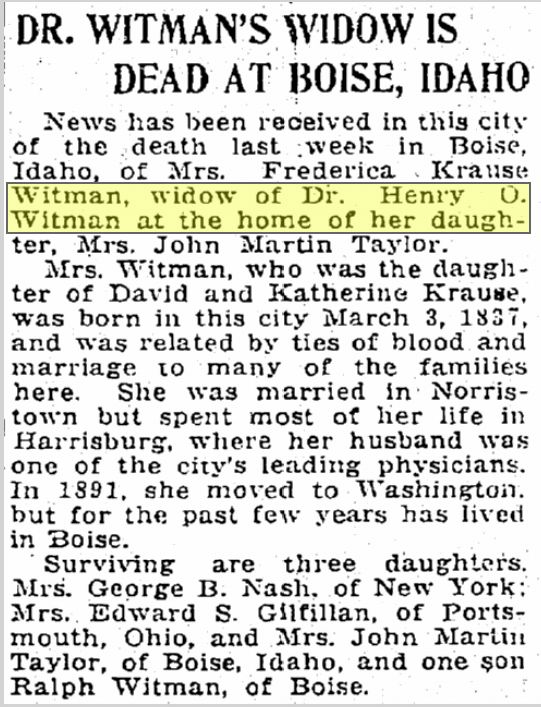
DR. WITMAN’S WIDOW IS DEAD AT BOISE, IDAHO
News has been received in this city of the death last week in Boise, Idaho, of Mrs. Frederica Krause Witman, widow of Dr. Henry O. Witman at the home of her daughter, Mrs. John Martin Taylor.
Mrs. Witman, who was the daughter of David Krause and Katherine Krause, was born in this city, 3 March 1837, and was related by ties of blood and marriage to many of the families here. She was married in Norristown but sent most of her life in Harrisburg, where her husband was one of the city’s leading physicians. In 1891, she moved to Washington, but for the past few years has lived in Boise.
Surviving are three daughters, Mrs. George B. Nash, of New York; Mrs. Edward S. Gilfillan, of Portsmouth, Ohio, and Mrs. John Martin Taylor, of Boise, Idaho, and one son, Ralph Witman, of Boise.
See also: Gratz During the Civil War – Dr. Andrew Maurer House.
—————————
News articles are from the on-line resources of the Free Library of Philadelphia.
Category: Research, Resources, Stories |
Comments Off on Henry O. Witman – Physician and Citizen Soldier of Halifax
Tags: African American, Andrew Curtin, Gratz Borough, Halifax, Lykens Township


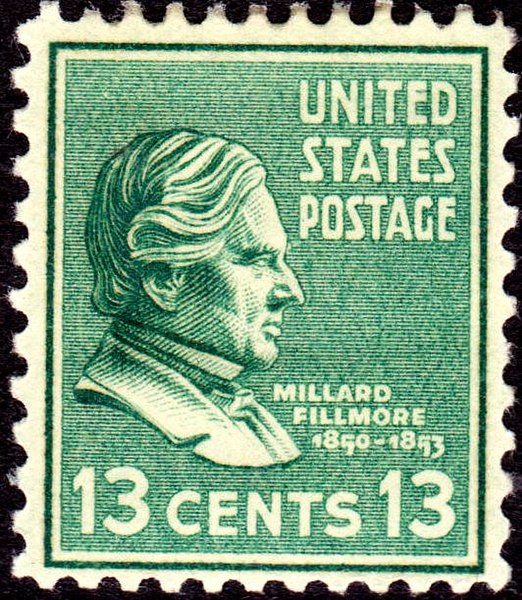


 ;
;
